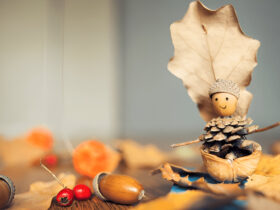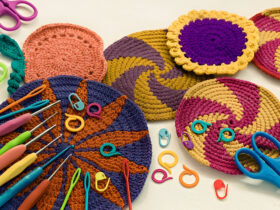Beginner Pottery Set is a fun and creative activity. If you are a beginner, choosing the right pottery set is important. First, decide what type of pottery you want to try. Handbuilding kits are great for beginners. They come with basic tools to shape and mold clay. If you want to try wheel throwing kit, look for a set with a potter’s wheel. This helps you make smooth, round shapes. A good kit should also have high-quality clay. Air-dry clay is easy to use because it does not need a kiln to harden.
Pottery tools are also important. Your kit should have a sculpting knife, rib tool, and sponge. These tools help shape and smooth the clay. Some kits also include guides or videos to help you learn. A good pottery set makes it easy to start and enjoy the process. With the right kit, you can create beautiful pottery at home. Happy potting!
Pottery Kits Explained

A pottery kit is a complete set with all the tools and materials needed to start making pottery. It’s perfect for beginners and those wanting to improve their skills. These kits simplify the process, making pottery easy and fun at home. They usually include clay, shaping tools, and a guide for step-by-step learning. Whether you’re trying a new hobby or refreshing old skills, DIY pottery kit is a great choice. Looking for the best beginner-friendly kit? Compare top-rated options and start your creative journey today!
Pottery for Beginners – Essential Equipment & Tools

Beginner Pottery Set can feel overwhelming with all the tools and terms. But don’t worry—it’s easier than it looks! I discovered Pottery starter kit through a friend, which helped me get started. This guide will make things simpler for you.
Before buying tools, check if there are pottery classes in your area. Joining a class lets you learn the basics without investing in expensive equipment. If you enjoy working with clay, you can then set up your own space.
For beginners, essential tools include:
- Clay – Air-dry or kiln-fired options
- Pottery wheel – Optional but useful
- Shaping tools – Sponges, ribs, and carving tools
- Glazes and paints – To finish your pottery
Looking for a local class? Here are some places offering pottery courses:
- [Penny Withers]
- [Art House]
- [Sheffield College]
Taking a class first can save you money and help you decide if pottery is right for you. Ready to get started? Explore Beginner Pottery Set and find the right tools today!
How to Choose the Right Pottery Kit

Selecting your first pottery kit can be exciting but overwhelming. To make the right choice, consider these key factors:
1. Type of Clay
Different pottery kits come with various types of clay. Choose the one that best fits your needs:
- Air-Dry Clay – Ideal for beginners since it doesn’t need a kiln. Great for decorative pieces.
- Polymer Clay – Requires baking in a home oven and is perfect for detailed designs.
- Ceramic Clay – Traditional pottery clay that needs kiln firing for durability.
2. Essential Tools
A quality beginner pottery set should include:
- Rolling Pin or Slab Roller – Helps flatten clay evenly.
- Cutters or Knives – For precise shaping.
- Ribs and Scrapers – Smooth out rough surfaces.
- Needle Tool – Adds fine details and texture.
- Sponges and Brushes – Useful for finishing and glazing.
3. Learning Materials
Beginners benefit from kits that include:
- Step-by-Step Guides – Printed manuals for easy reference.
- Online Tutorials – Video lessons for hands-on learning.
Want a hassle-free start? Look for beginner pottery set with all the essentials in one package. Whether you’re creating decorative items or practical pottery, the right kit makes all the difference. Compare top-rated kits today and start your creative journey!
Best Clay for Beginners in Pottery

Before buying equipment, it’s important to choose the right clay. The type of clay you use determines the firing temperature and kiln requirements.
Clay is generally classified into three types: earthenware, stoneware, and porcelain.
1. Earthenware (Low-Fire Clay)
- Fires at a low temperature, making it energy-efficient.
- More porous than other clays, so it can absorb water.
- Not dishwasher or microwave safe unless properly glazed.
- Best for decorative pieces and simple projects.
2. Stoneware (Mid-Fire Clay)
- Fires at a higher temperature than earthenware.
- Available in colors from white to tan, red, or speckled.
- Durable and ideal for making tableware like mugs and bowls.
- When properly fired, it’s safe for dishwashers and microwaves.
3. Porcelain (High-Fire Clay)
- Requires a high-temperature kiln, which some hobby kilns can’t reach.
- Produces fine, smooth ceramics that can be translucent when thin.
- More expensive than other clays—often twice the price.
- Used for delicate, high-quality pottery pieces.
For beginners, earthenware or stoneware are the best options. They are easier to work with and don’t require extremely high temperatures. Ready to start? Choose the right clay and begin your pottery journey today!
Find the Perfect Pottery Kit

Choosing the right pottery kit makes starting easier. We offer beginner kits with good materials, basic tools, and simple instructions to help you begin.
Why Pick Our Pottery Kit?
✔ Made for Beginners – Our kits have everything you need, with no extra parts, making pottery easy and fun.
✔ Premium Materials – We provide high-quality clay and durable tools to ensure your projects turn out great.
✔ Guidance & Support – Enjoy access to online tutorials and a creative community for tips and inspiration.
Ready to explore pottery? Get started with a kit that makes learning easy and enjoyable!
Beginner Methods for Making Pottery
There are several ways to create pottery, and beginners can start with simple techniques before advancing. Here are three popular methods:
1. Slab Building
- Clay is rolled into flat sheets and shaped into cylinders, bowls, or plates.
- Slabs can be formed by hand or with a slab roller for consistency.
- Great for beginners who want structured designs without complex tools.
2. Slip Casting
- Uses a liquid clay mixture (slip) poured into molds.
- Molds can be bought or made from plaster for custom designs.
- Ideal for making multiple identical pieces easily.
3. Wheel Throwing
- Clay is shaped on a spinning pottery wheel.
- It takes practice, but once learned, it’s fast and efficient.
- Wheels can be electric or manually powered by foot.
Each method offers a unique way to create pottery. Beginners can experiment with different techniques to find what suits them best. Ready to start? Pick a method and begin crafting today!
Buying Your First Kiln

If you’re getting a kiln for the first time, size and power requirements are key factors. Small kilns are portable and can plug into a standard socket, while larger kilns may need professional wiring. Smaller kilns also allow for more frequent firings since they fill up faster.
When I bought my first kiln, I didn’t know much and found one on eBay for around £150. It was an old kiln sitter type, about 14″ in diameter and 24″ high. While it worked well, sometimes I wished for a smaller one to fire more often.
When buying a used kiln, check for: ✔ Firebrick condition – Avoid kilns with major cracks. ✔ Elements – Worn-out or loose elements can cause issues.
A new kiln is like a new car—it’s expensive but in great condition. Kilns get very hot, so place them in a garage or outside, away from anything that can catch fire. Pick the right one for an easy pottery experience!
Choosing a Beginner-Friendly Pottery Wheel
If you’re interested in wheel throwing, a pottery wheel is essential. Electric wheels are ideal for beginners, especially if you have limited space. Even a small electric wheel is enough for most projects. A high-powered wheel is only necessary for making large, heavy pots.
A variable speed control is an important feature. Some wheels use a fixed gear system, which limits speed options. Another useful function is the reverse spin option, which helps if you prefer throwing in the opposite direction.
Some potters prefer kick wheels, saying they offer better control. I haven’t tried one yet, but I hope to in the future when I have more space. For now, an electric wheel is the best choice for most beginners!
Essential Pottery Tools for Beginners

You don’t need many tools to start pottery. Your hands are the best tools, shaping natural curves effortlessly. But a few basic tools can make the process smoother.
Top 7 Pottery Tools for Wheel Throwing
✔ Cut-off Wire – Used to remove pots from the wheel. Usually made of nylon or metal with wooden handles.
✔ Sponge – Helps keep the clay moist while throwing. A sponge on a stick is useful for removing water from deep pots.
✔ Chamois Leather – Perfect for smoothing rims. You can cut a large chamois into small pieces for convenience.
✔ Wooden Rib – Ideal for smoothing the base of plates and shallow bowls.
✔ Pin Tool – Great for trimming uneven tops or popping air bubbles. Thinner pins work better for precise cuts.
✔ Throwing Stick – Cleans up the pot’s exterior and creates an undercut at the base for easier removal.
✔ Trimming Tool – Essential for refining shapes and making footrings when the clay is firm.
With these simple tools, you’ll have everything needed to start your pottery journey!
Glaze Options for Beginner Potters

Some pottery, like flowerpots, can be left unglazed, but most pottery pieces benefit from glazing. Glazes come in glossy or matte finishes, with variations in between. Glossy glazes are often preferred for tableware because they are easier to clean. Some glazes are transparent or semi-transparent, allowing the clay’s texture or speckles to show through.
The easiest way to glaze is to buy pre-made glaze powders from ceramic suppliers. These come in a variety of colors and finishes. The firing temperature must match your clay type and be suitable for your kiln’s capacity.
When trying a new glaze, 2kg of powder is enough for dipping mugs or small pieces. A good starting ratio is 1kg of water per 1kg of glaze powder. Since glaze materials can produce dust, always wear a respirator mask when handling them. For a smooth finish, use a fine sieve (80 mesh or higher) to remove unwanted particles.
Many beginners use ready-made glazes because they work well with different clays and firing methods. Some potters make their own glazes to control color, texture, and cost. But ready-made glazes are great for beginners.
Recommended Pottery Suppliers

Here are some pottery suppliers I’ve used and had a good experience with. There are many other great options, but these have been reliable and offered quality products.
✔ CTM Potters Supplies – Offers a wide range of clays, glazes, and tools for beginners and professionals.
✔ Bath Potters Supplies – Stocks pottery equipment, including kilns, wheels, and decorating materials.
✔ Clay Cellar – Specializes in high-quality clay and raw materials for pottery making.
Beginner Pottery Set – Quick Q&A
Q. What is included in a beginner pottery set?
A beginner pottery set usually includes clay, basic shaping tools, a sponge, a rolling pin, and sometimes paints or glazes.
Q. Is a pottery wheel necessary for beginners?
No, many beginner pottery sets focus on hand-building techniques like pinch pots, coil building, and slab work.
Q.What type of clay is best for beginners?
Air-dry clay is great for beginners since it doesn’t require a kiln, while polymer clay can be baked in a home oven.
Q. Can kids use a beginner pottery set?
Yes! Many sets are designed for kids and adults, with non-toxic clay and easy-to-use tools.
Q.Where can I buy a beginner pottery set?
Beginner pottery sets are available online, at craft stores, and through pottery suppliers.
Conclusion: Beginner Pottery Set
A beginner pottery set is a great way to try pottery without spending a lot. These sets have the basic tools and clay you need to start. Whether you’re having fun or learning a new skill, a pottery set makes it easy to begin. With practice and creativity, you can make beautiful pottery. Choosing a set with good materials will make the experience better. Start your pottery journey today and enjoy working with clay!









Leave a Reply